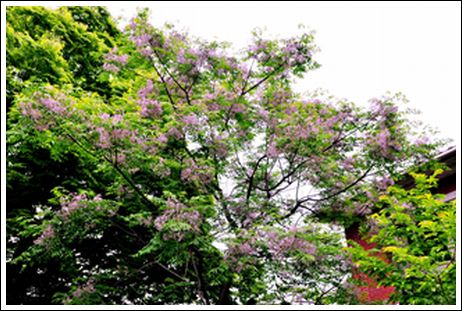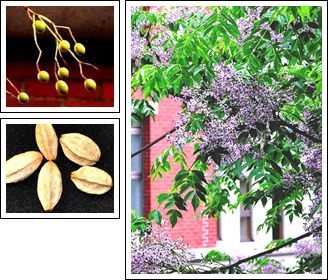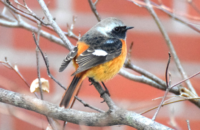 みなさんの中には表題をみて「おやっ?」と思った人もいると思います。これまで「栴檀(せんだん)は双葉より芳し」と記憶している人が多いでしょう。ところが「センダン」という名の植物は、双葉どころか立派な葉でも、あの独特の芳香がしません。実は、日本でいう「センダン」は「栴檀」という字が使われますが、インドで「栴檀」は「ビャクダン」という全く別の樹木のことを指します。
みなさんの中には表題をみて「おやっ?」と思った人もいると思います。これまで「栴檀(せんだん)は双葉より芳し」と記憶している人が多いでしょう。ところが「センダン」という名の植物は、双葉どころか立派な葉でも、あの独特の芳香がしません。実は、日本でいう「センダン」は「栴檀」という字が使われますが、インドで「栴檀」は「ビャクダン」という全く別の樹木のことを指します。
なぜこのようなことになったかについては、いろいろな説があります。平家物語の一文から誤って広まったというもの、日本の「センダン」は果実が密に付くので「千団子」と呼ばれたが、江戸期に「栴檀子」と記されたため、庶民がインドの「栴檀」と混同したとか、いろいろな説明がされています。 右写真は立志館西側の「センダン」の木です。秋には緑の果実が黄金色に輝き、ヒヨドリなどの野鳥が好んで食べます。野鳥は種子の周囲の果肉部は食べますが、固い種子は食事の場所で廃棄し、「種子散布」します。面白いのは種子の形です。五角形から六角形の固い種子はア-モンドのような紡錘形で、思わず拾いたくなる形です。
右写真は立志館西側の「センダン」の木です。秋には緑の果実が黄金色に輝き、ヒヨドリなどの野鳥が好んで食べます。野鳥は種子の周囲の果肉部は食べますが、固い種子は食事の場所で廃棄し、「種子散布」します。面白いのは種子の形です。五角形から六角形の固い種子はア-モンドのような紡錘形で、思わず拾いたくなる形です。
みなさんもこの木の前で、「センダン」が秘めた混乱の物語や種子の形は何を狙っているのかなど、いろいろ自由に思いを巡らしてみてください。
Have you ever heard the saying “Genius shows itself even in childhood”? The saying uses the Japanese name of the Chinaberry tree. In fact, the name in Japanese, “Sendan”, is being used for what is known as the Sandalwood tree in India. It is thought that this mistake began when it was used in the Tale of Heike to introduce a tree that looked like the Chinaberry tree.
You can see Chinaberry trees near the Risshikan building in our school. In autumn, many wild birds come to snack on the seeds. They eat the flesh of the seeds, dropping the hard centers on the ground.



